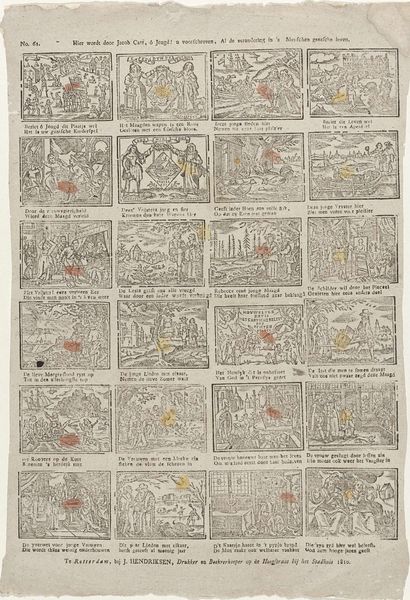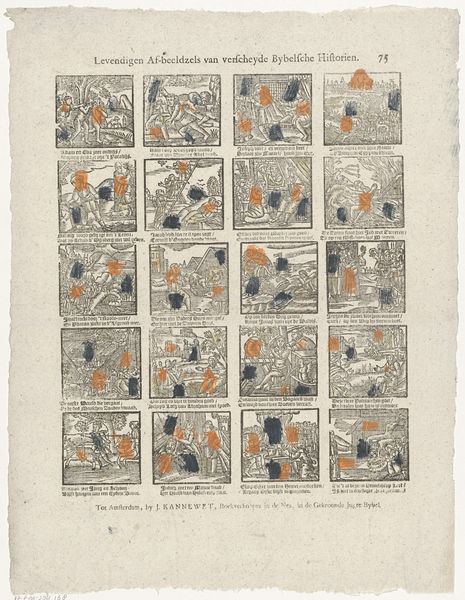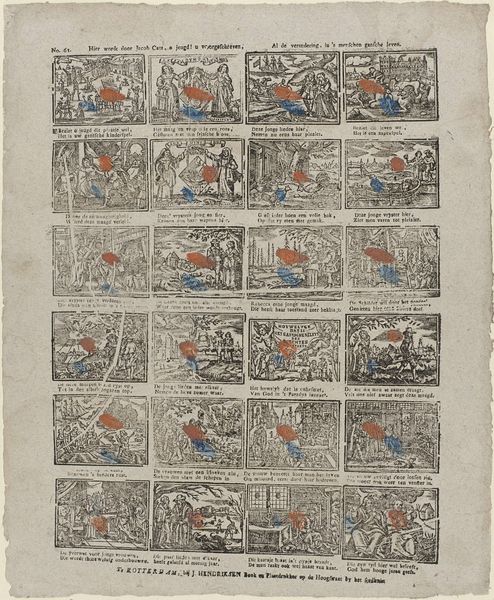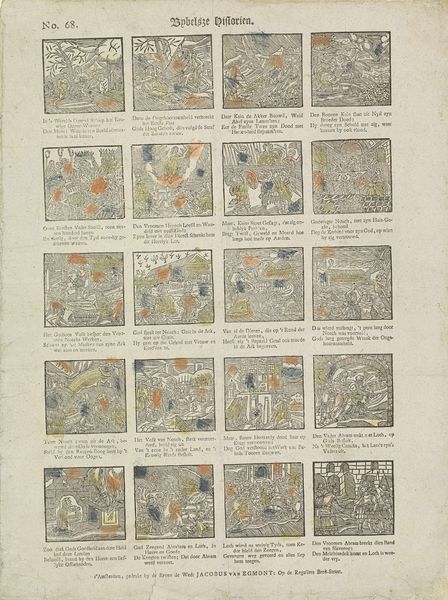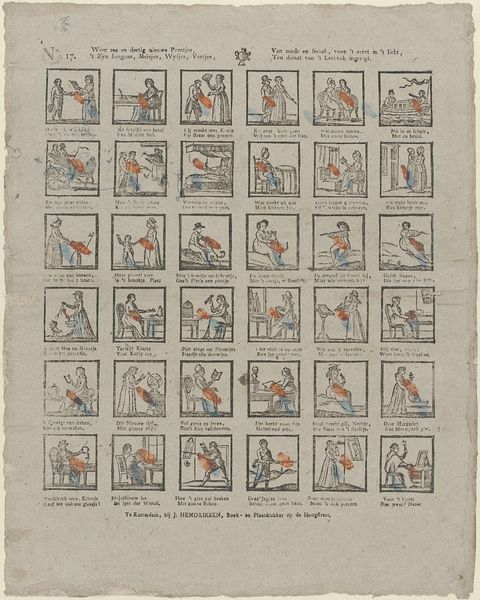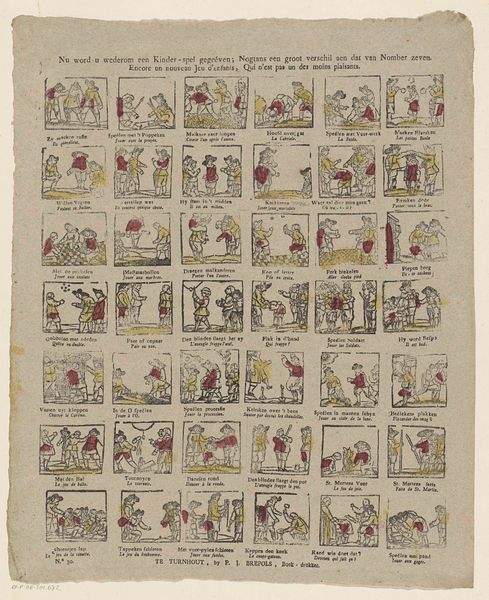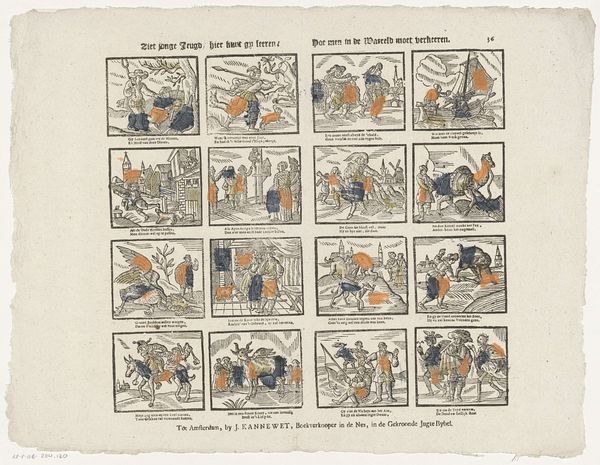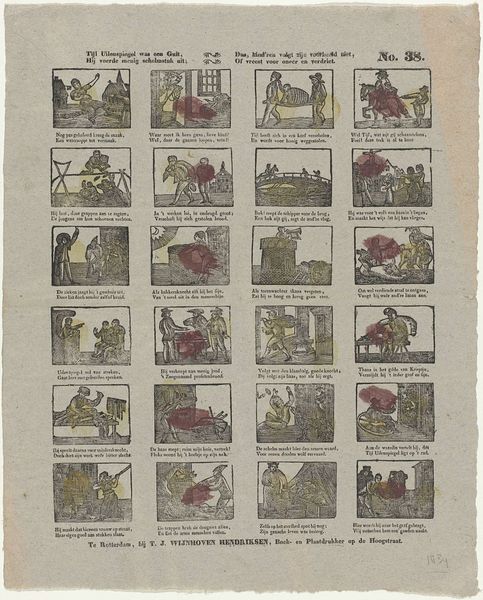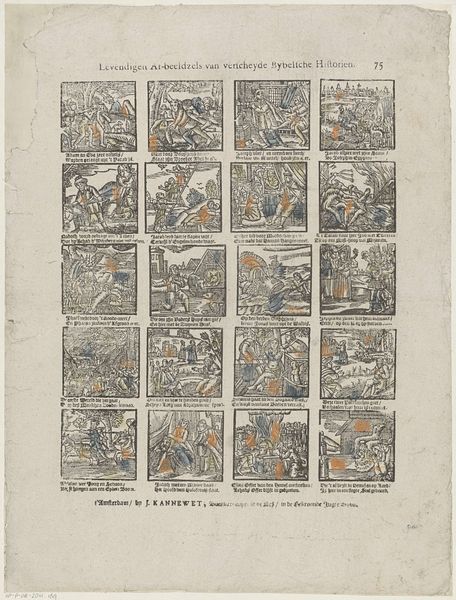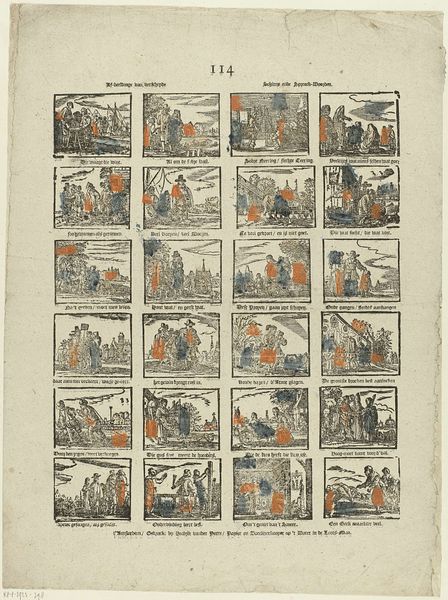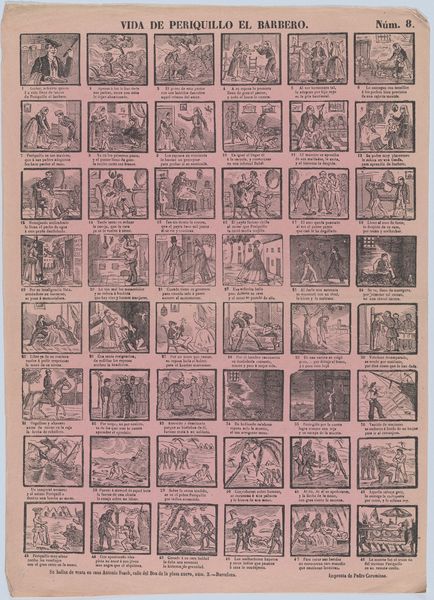
Komt gy kinderen / komt aanschoud / Hier is stof voor jonk en oud 1725 - 1780
0:00
0:00
print, engraving
#
narrative-art
# print
#
folk-art
#
genre-painting
#
history-painting
#
engraving
Dimensions: height 410 mm, width 305 mm
Copyright: Rijks Museum: Open Domain
Curator: This engraving from sometime between 1725 and 1780, made by Johannes (II) Kannewet, is titled "Komt gy kinderen / komt aanschoud / Hier is stof voor jonk en oud," which translates to "Come you children, come and see, here is material for young and old." Editor: It reminds me of early comic strips, but each frame has a static quality, as if these historical events are frozen in time. The figures are very small. What story do you think these frames are trying to tell? Curator: It's a narrative print, popular at the time, presenting various historical and biblical scenes intended for moral instruction, specifically aimed at children. These were often distributed as single sheets and meant to be pinned up on walls. The arrangement of scenes is non-linear, allowing viewers to jump between different stories and find connections on their own. Editor: That certainly speaks to a different method of disseminating stories and reinforcing beliefs. Did people at the time consider these art? Or just teaching aids? What sort of lessons would they contain? Curator: I would say it probably functioned as both art and educational tool. Each vignette touches upon important religious stories meant to serve as examples, offering models of both virtue and vice. They’re rooted in a worldview meant to uphold existing power structures and social order. Editor: So in that sense, we’re not simply seeing “art for art’s sake," but rather an art form deeply intertwined with societal expectations and perhaps limitations, framing an historical past intended for both informing and also perhaps misinforming the 'jonk en oud'. It serves as a tool for conveying particular ideologies and maintaining certain cultural norms. Curator: Precisely, its visual simplicity belies a complex web of cultural values, using historical narratives to mold the beliefs of its audience. Editor: Considering that the material’s targeted readership were both 'jonk en oud', I'm curious how such readily-accessible material affected and moulded Dutch values at the time, both in childhood and adult understanding. Curator: Examining the form as an object and instrument of cultural power in Amsterdam in that time period reveals how ideologies took root through these digestible yet lasting forms. Thank you. Editor: Yes, examining historical narrative prints of the period reveal complex belief systems behind seemingly simple visual forms. Thanks.
Comments
No comments
Be the first to comment and join the conversation on the ultimate creative platform.
